The Dubai Duty Free Tennis Championships are well and truly underway despite the absence of its two greatest champions, Roger Federer and Novak Djokovic. But there is a new face at the ATP 500 level who has established himself as a favorite just the way those two champions had.
Andrey Rublev came into the tournament on the back of four titles and a 20-match winning streak at this level. But exactly how much of a favorite was he at the start of the tournament, and has that changed in any way in the three rounds since?
Here, we have put together a tournament bracket forecast that uses a player's Elo Ratings to predict their chances of winning every round, right through to the finals. The Elo Ratings are sourced from Tennis Abstract, and are updated on a weekly basis.
How does Elo work?
To put it in simple terms, let's say it's a point system that awards or penalises players as per their wins or losses. It is a system that is dependent on the 'strength' of the opponent you're facing instead of the round in which the matchup takes place.
The ratings thus generated, can lend us an idea of the outcome of the matches involving the concerned set of players in the immediate future. It must be noted, however, that the system disregards the 'matchup' variable that also plays a considerable role in how a match plays out, besides the 'base level' of the two players involved.
This is what the Elo ratings for ATP look like as on 15 March 2021:

How are Elo ratings converted to probabilities?
If two players, A and B, participate in a match, with their Elo ratings denoted by Elo(A) and Elo(B) respectively, then the probability of A to win the match is given by:
P(A) = 1/[1+10^{(Elo(B)-Elo(A))/400}].
For example, if Player A has a rating of 1736 and Player B has a rating of 1652, then Player A is 61.86% likely to win the match.
The set of probabilities thus obtained is then used in a conditional nested structure, based on the tournament draw, to forecast every player's chances of reaching every round.
Within-tournament performance combined with existing Elo
A player might be at 'lower strength' coming into a tournament but can come up with a series of fine performances to produce a deep run. So when he reaches, say, the finals, at what strength do you 'measure' him? The level he was at prior to the tournament, or the level he has been within the tournament?
The most prominent and recent example of such a dilemma was raised by Nikoloz Basilashvili's showing at Doha.
In order to get a theoretically improved estimate, we combine both the measures. We start out with a 90%-10% split of Base Elo and Tournament Elo, and increase the Tournament Elo split by 10% with every passing round. So when a player reaches the finals of a 64-player bracket (such as that in Dubai), he has a 50-50 split in his two ratings.
Estimating Match Elo through percentage of service points won
Since the Elo ratings are published weekly and not daily, a method has been devised to estimate the performance of a player based on his match performance, in order to thus estimate his tournament performance.
Assume that in a match between two players, we had prior knowledge of their respective percentage of service points won when that match reached completion. We could have then drawn an estimate of how likely they were to win the match to begin with, using a probability function.
To illustrate this point, consider the following example:
In the first round match between Kei Nishikori and Reilly Opelka, Nishikori won 73% of his service points and Opelka won 72% of his service points. The respective probabilities translate to Nishikori having a match win probability of 53.55% and Opelka having 46.45%. In other words, if they registered such numbers over a hypothetical set of 10,000 matches, Nishikori would have won around 5,355 of them.
This probability is what that we are, in turn, using to estimate perfromance Elo. For Nishikori, it is the average of his base Elo (1784) and at what level he would have had to play to generate a match win probability of 53.55% against Opelka at Elo 1763 - the latter of which is calculated to be 1788. Accordingly, Nishikori gets a performance score of 1786.
The tournament Elo is thus given by an average of all the performamce Elo's from the completed matches a player takes part in. We reject the results obtained from incomplete matches.
Dubai Tennis Championships 2021 main draw
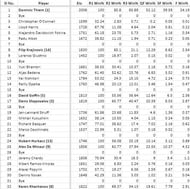
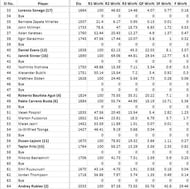
As you'd expect, when the draw came out, Andrey Rublev was indeed the forecasted favorite to win the tournament, at 29.46%, edging out Dominic Thiem at 24.19%.
With 18 byes in the first round, the 64-player field was reduced to 46 players. If each one of these 46 players was equally likely to win every match, they would have all had a 2.17% chance of winning the entire tournament.
Using their Elo scores, however, only 11 of them registered a score above that mark:
- Andrey Rublev: 29.46%
- Dominic Thiem: 24.19%
- Jannik Sinner: 6.50%
- Pablo Carreno Busta: 5.36%
- Alex De Minaur: 4.32%
- Daniel Evans: 3.57%
- Robero Bautista Agut: 3.00%
- Denis Shapovalov: 2.97%
- Karen Khachanov: 2.91%
- Filip Krajinovic: 2.54%
- David Goffin: 2.36%
All of these players were seeded and were the beneficiaries of a first round bye.
Dubai update after 1st round
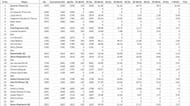
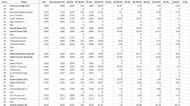
With the seeds not playing in this round, there wasn't much scope of an upset. Richard Gasquet (2147), Jan-Lennard Struff (2061) and Alexander Bublik (1901) recorded the best scores for this round.
The only two mathematical upsets recorded in this round were by Bernabe Zapata Miralles against John Millman, and Emil Rusuuvuori against Jordan Thompson.
Dubai update after 2nd round
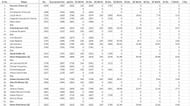
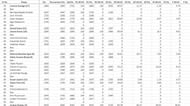
The biggest upset of this round was seen in Lloyd Harris knocking out the top seed Dominic Thiem, scoring 1983 on the Elo scale. But the best performance for this round was recorded by Denis Shapovalov (2276), who instantly became a heavy favorite to reach the final from the top half.
Andrey Rublev also scored highly (2130) and became an even stronger favorite for the title. Among the other strong perfomers were Hubert Hurkacz (2083), Aljaz Bedene (2055), Marton Fucsovics (2050) and Lorenzo Sonego (2035).
Dubai Update after Round of 16
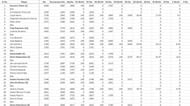
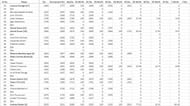
Lloyd Harris lived up to his billing from the previous round as he scored another upset and took out the 14th-seeded Filip Krajinovic in Round of 16. Jeremy Chardy edged out 8th seeded Karen Khachanov, and Australian Open sensation Aslan Karatsev took out 17th-seeded Lorenzo Sonego.
Denis Shapovalov came up with an amazing performance in this round as well (2274) and further impressed on his favorite status from the top half. From the bottom half, Andrey Rublev blitzed past a hapless Taylor Fritz with a performance rating of 2501.
Eight players currently remain in the draw, and if Elo estimations are anything to go by, Rublev is a near 50% favorite for the title.
Dubai update after quarterfinals
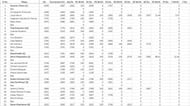
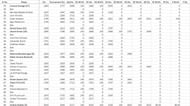
From the top half, in a match that was expected to be close, Lloyd Harris once again scored an upset - this time over a resurgent Kei Nishikori. Denis Shapovalov meanwhile remained flawless, again notching up a 2000+ score on the Elo scale in his win over Jeremy Chardy.
In the bottom half, Aslan Karatsev has been nothing short of a Lloyd Harris, and on Thursday he took down 16th-seeded Jannik Sinner in three sets. And Andrey Rublev has been just another variant of Denis Shapovalov; the Russian ran through Marton Fucsovics after a close opening set, scoring 2313 on the Elo scale.
Since match-wise Elo scores being generated are a function of a player's own base Elo besides that of his opponents, Andrey Rublev leads the remaining field in both Tournament Elo ratings (2244) and Adjusted Elo ratings (2117). But Denis Shapovalov has been the one whose Adjusted Elo (1935) has increased the most from what he started out with (1819).
Title forecast prior to the semifinals
- Andrey Rublev: 66.43%
- Denis Shapovalov: 21.92%
- Lloyd Harris: 5.97%
- Aslan Karatsev: 5.68%
